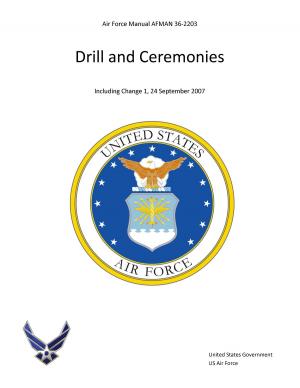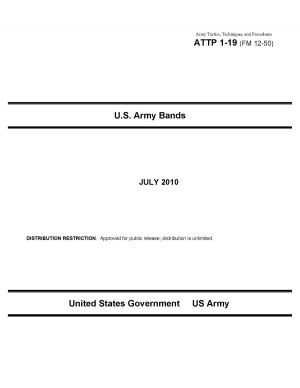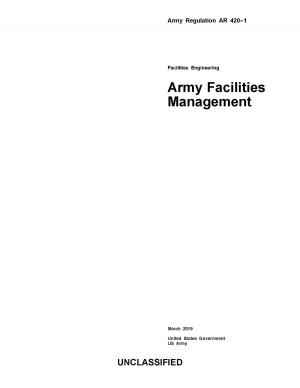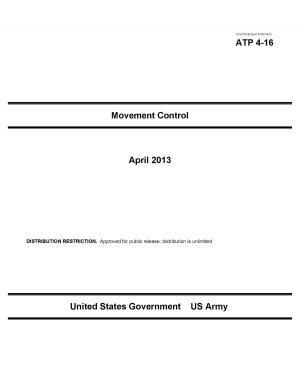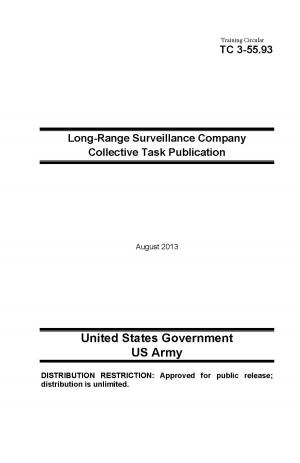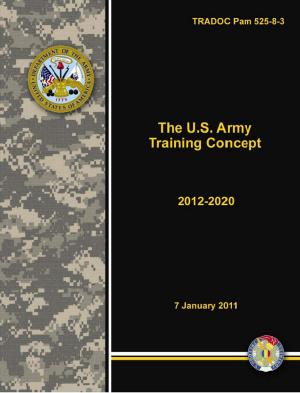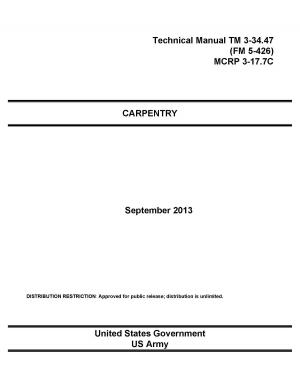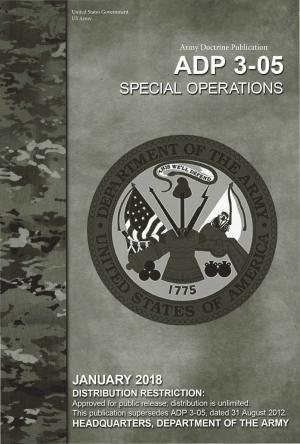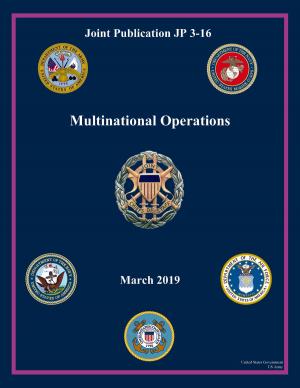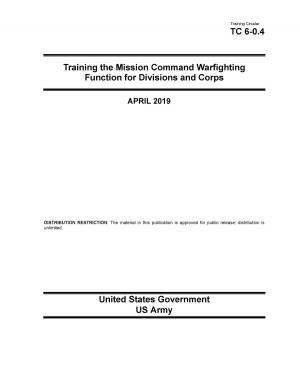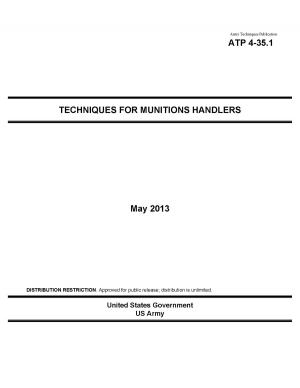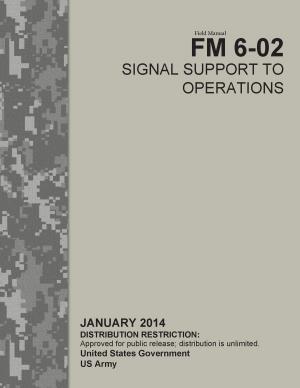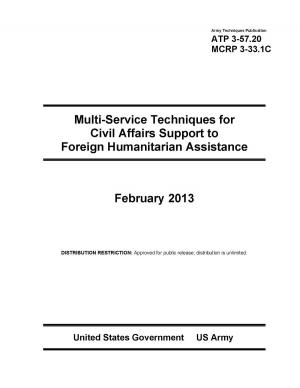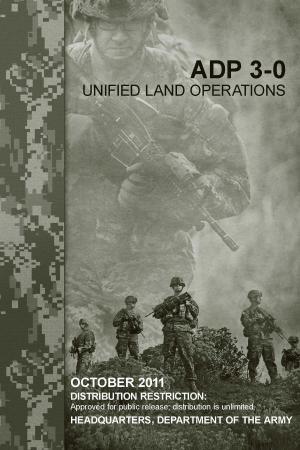Army Tactics, Techniques, and Procedures ATTP 3-11.36 MULTI-SERVICE TACTICS, TECHNIQUES, AND PROCEDURES FOR CHEMICAL, BIOLOGICAL, RADIOLOGICAL, AND NUCLEAR ASPECTS OF COMMAND AND CONTROL
Nonfiction, Reference & Language, Study Aids, Graduate & Professional, Armed Forces, Science & Nature, Technology, Military Science, Reference, Guides & Handbooks| Author: | United States Government US Army | ISBN: | 1230000125260 |
| Publisher: | eBook Publishing Team | Publication: | April 17, 2013 |
| Imprint: | Language: | English |
| Author: | United States Government US Army |
| ISBN: | 1230000125260 |
| Publisher: | eBook Publishing Team |
| Publication: | April 17, 2013 |
| Imprint: | |
| Language: | English |
This multi-Service publication represents a significant revision of the November 1986 publication. The scope of the previous publication was limited to the effect that weather and terrain have on nuclear, biological, and chemical (NBC) operations and obscuration operations. This publication expands that scope to include the doctrinal employment of chemical, biological, radiological, and nuclear (CBRN) capabilities (organizations, personnel, technology, and information) to characterize CBRN threats and hazards, including toxic industrial material (TIM), to the commander and the force. It is designed to provide commanders and staffs at the operational and tactical levels with capability employment planning data and considerations to shape military operations involving CBRN threats and hazards (CBRN shape) and a better understanding of where and when to expect CBRN hazards by applying information management (IM) to the military decisionmaking process (MDMP)/Marine Corps planning process (MCPP). This publication incorporates the characteristics of CBRN shape as addressed in joint concepts and in doctrine; and it provides doctrine and tactics, techniques, and procedures (TTP) for managing CBRN threats and hazards in the larger context of multi-Service military operations. The chapters present a doctrinal foundation, and specific TTP are included in appendixes. This manual also incorporates the joint doctrine elements for combating weapons of mass destruction (WMD), to include the passive defense capabilities of CBRN shape, CBRN sense, CBRN shield, and CBRN sustain. During military operations, this publication is subordinate to current joint publications (JPs) addressing this topic. This document incorporates the following key guidance—
• National strategy to combat WMD.
• National military strategy to combat WMD.
• Department of Defense (DOD) protection joint functional concept.
• Joint enabling concept for CBRN defense.
• JP 3-40.
The purpose of this publication is to provide commanders, staffs, key agencies, and Service members with a key reference for understanding, characterizing, and managing CBRN threats and hazards in a particular operational environment (OE). This manual bridges the gap between Service and joint doctrine. It contains TTP for commanders and staff to use for characterizing and managing CBRN threats and hazards while conducting multi-Service military operations. This manual addresses concepts, principles, fundamentals, planning, operational considerations, and training and support functions. It serves as the foundation for developing Service manuals and refining existing training support packages, mission training plans, training center and unit exercises, and Service school curricula. It drives the examination of organizations and materiel developments applicable to military support of CBRN aspects of command and control (C2).
This publication is designed for use at the operational and tactical levels but has implications at the strategic level in the implementation of CBRN supporting strategic objectives. The manual will support command staffs, CBRN staff officers, CBRN noncommissioned officers (NCOs), non-CBRN personnel performing collateral duties as additional-duty CBRN officers or NCOs, and employees of civilian agencies in the assessment, planning, preparation, and execution of CBRN C2 functions. This publication is intended to provide multi- Service C2 concepts and considerations for planning for, responding to, and recovering from CBRN events. It is not stand-alone guidance for United States (U.S.) Air Force (USAF) CBRN actions and activities. It is applicable to USAF units and USAF teams only in conjunction with appropriate USAF-specific publications, installation plans, supporting checklists, and other appropriate guidance.
This multi-Service publication represents a significant revision of the November 1986 publication. The scope of the previous publication was limited to the effect that weather and terrain have on nuclear, biological, and chemical (NBC) operations and obscuration operations. This publication expands that scope to include the doctrinal employment of chemical, biological, radiological, and nuclear (CBRN) capabilities (organizations, personnel, technology, and information) to characterize CBRN threats and hazards, including toxic industrial material (TIM), to the commander and the force. It is designed to provide commanders and staffs at the operational and tactical levels with capability employment planning data and considerations to shape military operations involving CBRN threats and hazards (CBRN shape) and a better understanding of where and when to expect CBRN hazards by applying information management (IM) to the military decisionmaking process (MDMP)/Marine Corps planning process (MCPP). This publication incorporates the characteristics of CBRN shape as addressed in joint concepts and in doctrine; and it provides doctrine and tactics, techniques, and procedures (TTP) for managing CBRN threats and hazards in the larger context of multi-Service military operations. The chapters present a doctrinal foundation, and specific TTP are included in appendixes. This manual also incorporates the joint doctrine elements for combating weapons of mass destruction (WMD), to include the passive defense capabilities of CBRN shape, CBRN sense, CBRN shield, and CBRN sustain. During military operations, this publication is subordinate to current joint publications (JPs) addressing this topic. This document incorporates the following key guidance—
• National strategy to combat WMD.
• National military strategy to combat WMD.
• Department of Defense (DOD) protection joint functional concept.
• Joint enabling concept for CBRN defense.
• JP 3-40.
The purpose of this publication is to provide commanders, staffs, key agencies, and Service members with a key reference for understanding, characterizing, and managing CBRN threats and hazards in a particular operational environment (OE). This manual bridges the gap between Service and joint doctrine. It contains TTP for commanders and staff to use for characterizing and managing CBRN threats and hazards while conducting multi-Service military operations. This manual addresses concepts, principles, fundamentals, planning, operational considerations, and training and support functions. It serves as the foundation for developing Service manuals and refining existing training support packages, mission training plans, training center and unit exercises, and Service school curricula. It drives the examination of organizations and materiel developments applicable to military support of CBRN aspects of command and control (C2).
This publication is designed for use at the operational and tactical levels but has implications at the strategic level in the implementation of CBRN supporting strategic objectives. The manual will support command staffs, CBRN staff officers, CBRN noncommissioned officers (NCOs), non-CBRN personnel performing collateral duties as additional-duty CBRN officers or NCOs, and employees of civilian agencies in the assessment, planning, preparation, and execution of CBRN C2 functions. This publication is intended to provide multi- Service C2 concepts and considerations for planning for, responding to, and recovering from CBRN events. It is not stand-alone guidance for United States (U.S.) Air Force (USAF) CBRN actions and activities. It is applicable to USAF units and USAF teams only in conjunction with appropriate USAF-specific publications, installation plans, supporting checklists, and other appropriate guidance.

